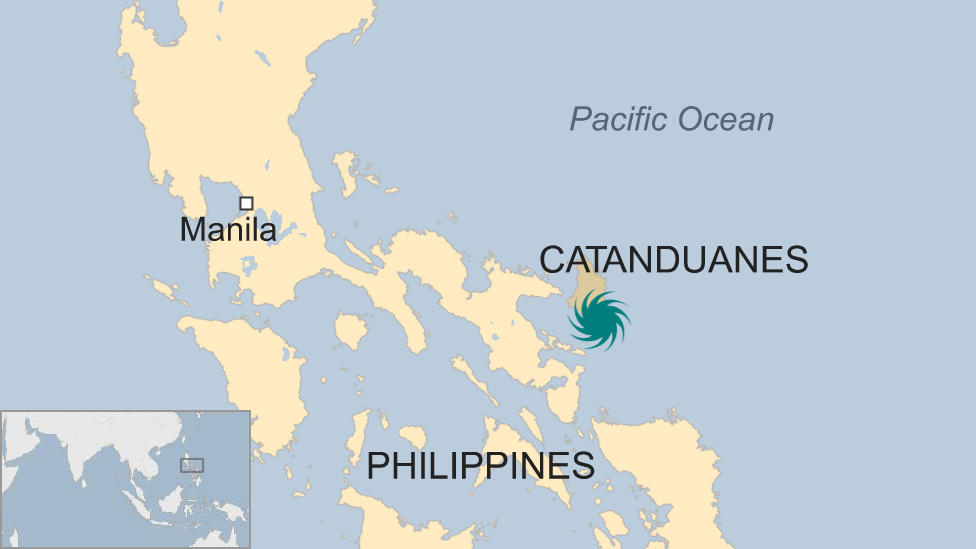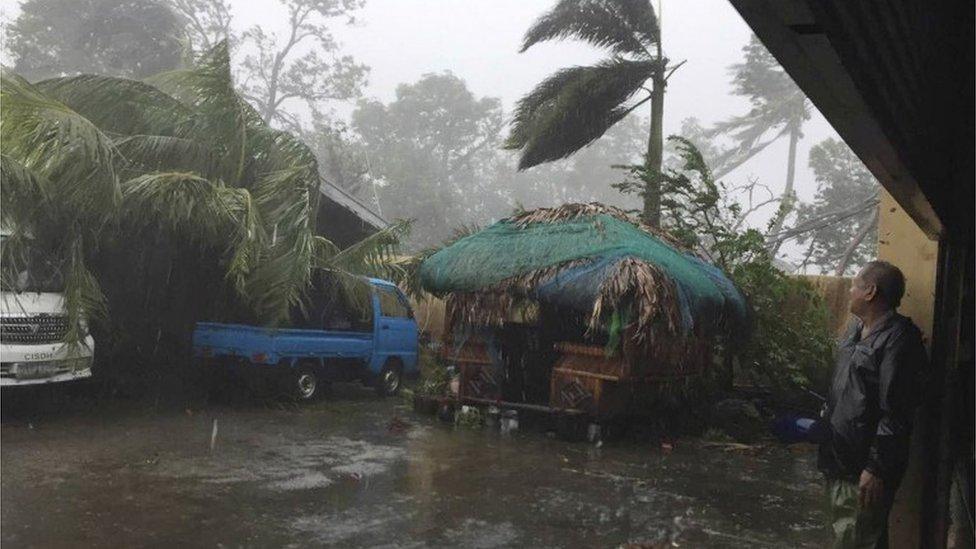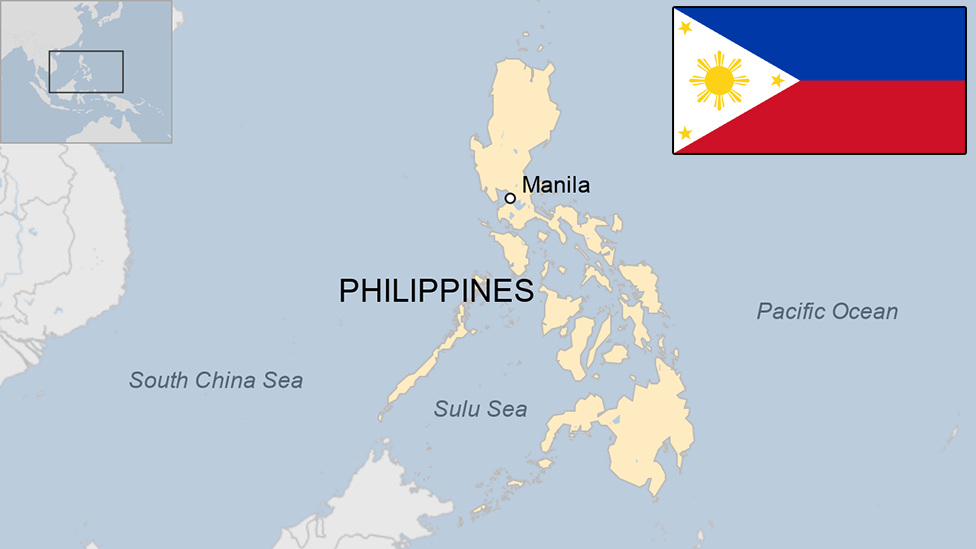Powerful typhoon Nock-Ten makes landfall in Philippines
- Published
Thousands of people are being urged to leave their homes
A typhoon packing gusts of wind up to 255km/h (158mph) has made landfall in the eastern Philippines.
Nock-Ten hit the coast near Catanduanes island at 18:30 local time (10:30GMT) but there are no reports yet of damage or casualties.
However, some 100,000 people have been moved from areas at risk in the Bicol region amid fears of widespread flooding and possible landslides.
Dozens of ports have closed, with warnings of two-metre (6.6ft) waves.
In October, Super Typhoon Haima hit the country, killing at least four people.
The landfall of Nock-Ten, also known as Nina and the strongest typhoon to hit the Philippines this year, was reported on the Twitter account of Pagasa-Dost, the Philippine Atmospheric, Geophysical and Astronomical Services Administration.

It issued a local thunderstorm warning and has forecast the typhoon will travel west at 15km/h.
Its sustained winds are currently about 185km/h.
It will pass across the southern area of the main island of Luzon, possibly weakening as it travels close to the capital, Manila, before heading into the South China Sea.
Typhoon Nok-Ten makes landfall
In Manila, officials ordered big roadside advertising boards to be taken down, fearing that strong winds could uproot them and injure people.
There have been fears Filipinos would ignore evacuation warnings to stay at home with family at Christmas, the biggest holiday in the largely Catholic nation.
The strength of the typhoon is equivalent to a Category Three hurricane in the Atlantic, according to the JTWC data, or a Category Two storm based on the information from the Philippines' weather office.
In 2013, super typhoon Haiyan claimed more than 7,350 lives.
- Published25 December 2016

- Published20 October 2016

- Published5 July 2023
